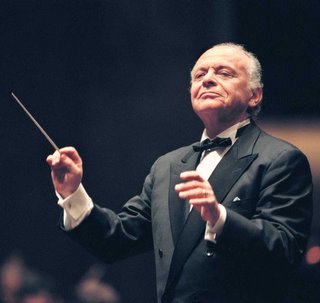Ionarts at Large: Peter Grimes at the Met
 Peter Grimes, directed by John Doyle with sets by Scott Pask, Metropolitan Opera, photo by Ken Howard, 2008 |
Anthony Tommasini, The Outsider in Their Midst: Britten’s Tale of the Haunted Misfit (New York Times, March 1) Anne Midgette, A Grim Outcome for 'Grimes' at The Met (Washington Post, March 1) Jeremy Gerard, Magnificent 'Grimes' a Fiasco in New Met Staging (Bloomberg News, March 1) Joshua Kosman, Runnicles energizes Met's 'Grimes' (San Francisco Chronicle, March 7) Heidi Waleson, A Staging Better Heard Than Seen (Wall Street Journal, March 6) Martin Bernheimer, Peter Grimes, Metropolitan Opera, New York (Financial Times, March 3) Matt Blank, Photo Journal: John Doyle Directs Peter Grimes at the Met (Playbill Arts, February 29) James Jorden, Surmounting Disaster (Gay City News, March 20) Attend the tale of Peter Grimes (Out West Arts, March 25) |
The bleak story of Grimes was drawn from George Crabbe's poem The Borough (a set of 24 letters about a Suffolk seaside village, with Letter 22 about Peter Grimes). Montagu Slater wrote the libretto, in close association with Britten (who was born in Suffolk, the seascape where "half-naked seaboys crowd," according to the libretto) and his companion, tenor Peter Pears, who created the title role. The work began in the early 1940s, when Britten and Pears were refugees in the United States during World War II, and the outsider title character could be identified with Britten's predilection for teenage boys or his pacifist views, both of which set him uncomfortably apart. While the ominous wall captured the oppressive sense of the "Borough hate [that] poisons your mind," as Peter sings at one point, it was a visual bludgeon where more subtle means would have been more apt. Furthermore, the Borough's hatred is only one part of this masterful score, and the only visual element corresponding to the siren call of the sea interludes was a blue light (design by Peter Mumford) cast on the wall from time to time.
The best example of a more subtle and truly excellent production was the Santa Fe Opera Grimes in 2005. The Grimes from that production, Anthony Dean Griffey, was just as fine at the Met. The cavernous space here was a less welcoming acoustic for his sweet upper register, which almost evokes an abused choirboy grown old and bitter. That is one possible explanation of the perverse tendencies of Grimes, as we know that abusers of children were often abused as children, perhaps hinted at in the particularly rough direction of the scenes between Grimes and his ill-fated (ap)prentice, John, played with innocent, mute vulnerability by Logan William Erickson. In Griffey's mad scenes ("Now the Great Bear and Pleiades," notably) there was a tender, poetic quality that goes along with those oddly lyric words from a roughneck fisherman. All in all, Griffey was a much better choice for the role than Neil Shicoff, whom he reportedly replaced in the role, for whatever reason.
 Felicity Palmer (Mrs. Sedley) and Teddy Tahu Rhodes (Ned Keene) in Peter Grimes, Metropolitan Opera, photo by Ken Howard, 2008 |
The main dramatic effect of the production's ominous wall was to reduce the large and musically potent chorus (directed admirably by Donald Palumbo) to something like a concert performance of Peter Grimes. Removing some of the characters to the niches in the wall (which La Cieca so archly compared to the sets of Laugh-In) further sapped the opera's dramatic vitality, as in the final scene. Some choreographic attempts to create a sense of movement, like the hauling motions in the first act, came off as lame-hearted and ridiculous. Fortunately, none of this mattered much to one's enjoyment of what could be considered the greatest opera of the 20th century, not least because of the excellent playing from the Metropolitan Opera Orchestra under the masterful, left-handed baton of Donald Runnicles. The orchestral fabric, even without visual help, painted the sea as sometimes gentle, sometimes terrifying, and ultimately the only bed where Grimes could take his rest.
To our great joy, Britten's Peter Grimes is also on the schedule for the 2008-2009 season at Washington National Opera (also with Patricia Racette as Ellen Orford).
























































